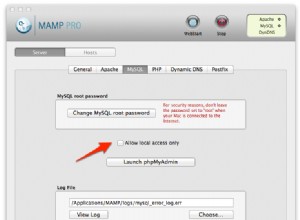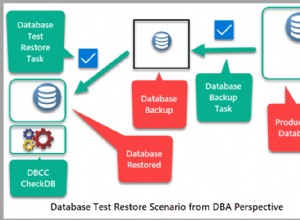A única maneira de fazer isso é com uma tabela de controle de código ...
create table code_control
(year number(4,0) not null
, type varchar2(1) not null
, last_number number(38,0) default 1 not null
, primary key (year,type)
)
organization index
/
... que é mantido assim ...
create or replace function get_next_number
(p_year in number, p_type in varchar2)
return number
is
pragma autonomous_transaction;
cursor cur_cc is
select last_number + 1
from code_control cc
where cc.year= p_year
and cc.type = p_type
for update of last_number;
next_number number;
begin
open cur_cc;
fetch cur_cc into next_number;
if cur_cc%found then
update code_control
set last_number = next_number
where current of cur_cc;
else
insert into code_control (year,type)
values (p_year, p_type)
returning last_number into next_number;
end if;
commit;
return next_number;
end;
/
O importante é o SELECT... FOR UPDATE. O bloqueio pessimista garante exclusividade em um ambiente multiusuário. O PRAGMA garante que a manutenção do
code_control não polui a transação mais ampla. Ele nos permite chamar a função em um gatilho sem deadlocks. Aqui está uma tabela com uma chave como a sua:
create table t42
(year number(4,0) not null
, type varchar2(1) not null
, id number(38,0)
, primary key (year,type, id)
)
/
create or replace trigger t42_trg
before insert on t42 for each row
begin
:new.id := get_next_number(:new.year, :new.type);
end;
/
Não há nada na manga antes de eu preencher
t42 :SQL> select * from code_control;
no rows selected
SQL> select * from t42;
no rows selected
SQL> insert into t42 (year, type) values (2016, 'A');
1 row created.
SQL> insert into t42 (year, type) values (2016, 'A');
1 row created.
SQL> insert into t42 (year, type) values (2016, 'A');
1 row created.
SQL> insert into t42 (year, type) values (2016, 'B');
1 row created.
SQL> insert into t42 (year, type) values (2016, 'A');
1 row created.
SQL> insert into t42 (year, type) values (2017, 'A');
1 row created.
SQL> select * from t42;
YEAR T ID
---------- - ----------
2016 A 1
2016 A 2
2016 A 3
2016 A 4
2016 B 1
2017 A 1
6 rows selected.
SQL> select * from code_control;
YEAR T LAST_NUMBER
---------- - -----------
2016 A 4
2016 B 1
2017 A 1
SQL>
Portanto, a objeção óbvia a essa implementação é a escalabilidade. As transações de inserção são serializadas no
code_control tabela. Isso é absolutamente verdade. No entanto, o bloqueio é mantido pelo menor tempo possível, portanto, isso não deve ser um problema, mesmo que o t42 tabela é preenchida muitas vezes por segundo. No entanto, se a tabela estiver sujeita a um grande número de inserções simultâneas, o travamento pode se tornar um problema. É crucial que a tabela tenha slots de transações de interesse (INITRANS, MAXTRANS) suficientes para lidar com demandas simultâneas. Mas sistemas muito ocupados podem precisar de uma implementação mais inteligente (talvez gerando os IDs em lotes); caso contrário, abandone a chave composta em favor de uma sequência (porque as sequências são dimensionadas em ambientes multiusuário).




